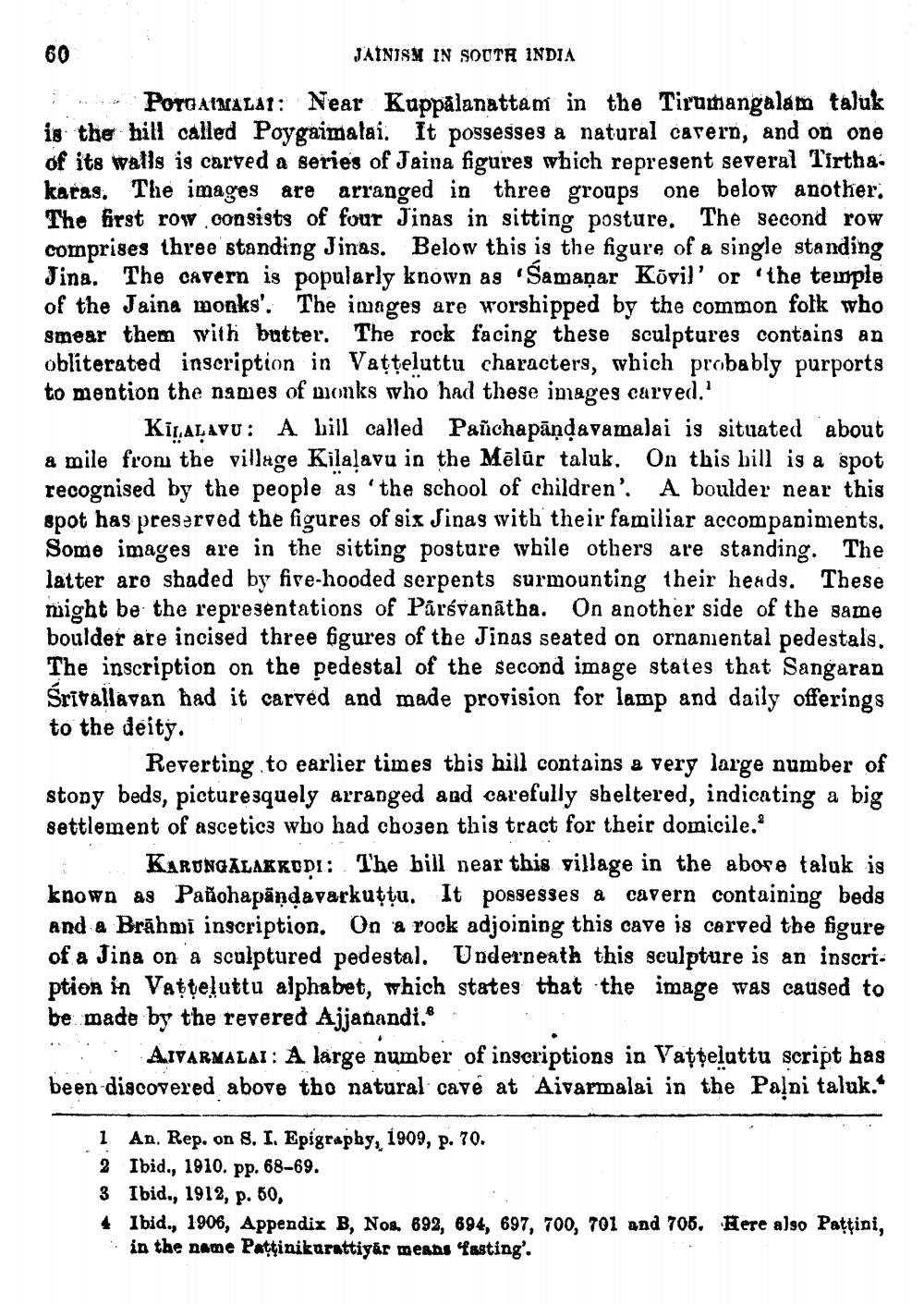________________
60
JAINISM IN SOUTA INDIA
POTGAIMALAI: Near Kuppalanattan in the Tirumangalam taluk is the hill called Poygaimatai. It possesses a natural carern, and on one of its walls is carved a series of Jaina figures which represent several Tirtha. karas. The images are arranged in three groups one below another. The first row.consists of four Jinas in sitting posture. The second row comprises three standing Jinas. Below this is the figure of a single standing Jina. The cavern is popularly known as Samañar Kõvil' or the temple of the Jaina monks'. The images are worshipped by the common folk who smear them with butter. The rock facing these sculptures contains an obliterated inscription in Vatteluttu characters, which probably purports to mention the names of monks who had these images carved.'
KilaĻAVU: A lill called Pañchapāņdavamalai is situated about a mile from the village Kilalavu in the Mēlúr taluk. On this hill is a spot recognised by the people as 'the school of children'. A boulder near this spot has preserved the figures of six Jinas with their familiar accompaniments. Some images are in the sitting posture while others are standing. The latter are shaded by five-hooded serpents surmounting their heads. These might be the representations of Parsvanātha. On another side of the same boulder are incised three figures of the Jinas seated on ornamiental pedestals. The inscription on the pedestal of the second image states that Sangaran Śrīvallavan ħad it carved and made provision for lamp and daily offerings to the deity. I
Reverting to earlier times this hill contains a very large number of stony beds, picturesquely arranged and carefully sheltered, indicating a big settlement of ascetics who had chosen this tract for their domicile.
KARUNGALAKKODI: The bill near this village in the above taluk is known as Pañohapāndavarkuţtu. It possesses a cavern containing beds And a Brāhmi inscription. On a rock adjoining this cave is carved the figure of a Jina on a sculptured pedestal. Underneath this sculpture is an inscri. ption in Vatteļuttu alphabet, which states that the image was caused to be made by the revered Ajjaħandi.
AIVARMALAI: A large number of inscriptions in Vatteluttu script has been discovered above tho natural cave at Aivarmalai in the Paļni taluk."
1 An. Rep. on 8. I. Epigraphy, 1909, p. 70. 2 Ibid., 1910. pp. 68-69. 3 Ibid., 1912, p. 60, 4 Ibid., 1906, Appendix B, No. 692, 694, 697, 700, 701 and 706. Here also Patțini,
in the name Pattinikurattiyar means "asting'.




